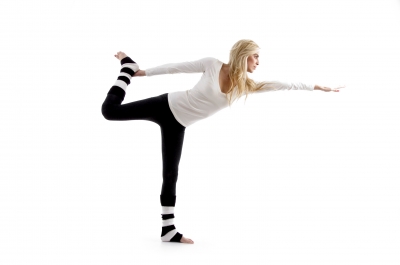Have you ever noticed that your dog will perform a behavior in one context but then not in another? This can seem like a puzzling phenomenon in dog training, but is actually a common and expected response. Dogs need lots of practice in order to generalize trained behaviors: that is, to be able to perform the behaviors anywhere and in any circumstances. Your dog needs to figure out exactly which factors are and are not relevant to each behavior you are trying to teach. By process of elimination, you help your dog zero in on the precise behavior you’re training. For example, when you give the signal for your dog to sit, you want your dog to sit no matter where you are, what the environment is, what position you are in, how far you are from your dog, what your facial expression is, and so forth. This post is the first in a series that will give you systematic ways to vary aspects of training so that your dog can be successful in performing his various trained behaviors in any context.
To minimize the potential for your dog to make associations you don’t want, change just ONE thing at a time. Each change gives your dog the opportunity to learn what the behavior is NOT related to: not location, your posture, what your hand is doing, the weather, the smell of dinner cooking… It’s amazing what associations dogs can make, whether we intended it or not!
When you change something in the training environment, be prepared for your dog to regress briefly while he tests things and figures out what is going on. Any time you “change the picture” for your dog, you may need to back up in the training steps for any given exercise, even to the point of re-teaching the exercise from scratch if necessary. For example, if you have trained a 20 second Sit/Stay at home, you may need to back up to only a couple of seconds when beginning to train a Sit/Stay in a new location. Don’t worry, the more you work on variations, the faster your dog will get back to levels that were achieved in a different context.
The ideas in this blog series have been greatly aided in organization by the wonderful book The Thinking Dog: Crossover to Clicker Training by Gail Tamases Fisher.
Variation 1: Your Posture and Expression
Choose an exercise and change your posture and expression. This includes sitting, standing, crouching, kneeling, lying down, bending over. Change your facial expression, the direction your head is turned, where you’re looking (dogs can pick  up our subtle eye movements), eye contact (from you) or no eye contact, glasses on or off, sunglasses on. Each change may alter your dog’s perception of the exercise, making it a different exercise. Also vary your arm position: arms crossed, uncrossed, hanging at your sides, over your head, on your hips, and so forth. Always be prepared to backtrack to help your dog figure out what is going on, and be sure to alter just one thing at a time.
up our subtle eye movements), eye contact (from you) or no eye contact, glasses on or off, sunglasses on. Each change may alter your dog’s perception of the exercise, making it a different exercise. Also vary your arm position: arms crossed, uncrossed, hanging at your sides, over your head, on your hips, and so forth. Always be prepared to backtrack to help your dog figure out what is going on, and be sure to alter just one thing at a time.
Stay tuned for Part 2 of Generalization Journey. Happy training!
(Image courtesy of imagerymajestic / FreeDigitalPhotos.net)
Everything is very open with a very clear clarification of the
issues. It was definitely informative. Your website is useful.
Many thanks for sharing!
Thanks for your kind words! We’re glad you stopped by our site!